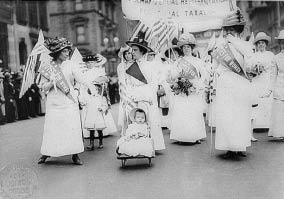II. Nations and States (from the middle of the 19th century to 1914)
2. The industrial states between conservative tradition and liberal and liberal and democratic push
→ Liberal democracy —popular sovereignty claimed
—voting, majority rule
—liberal democracy, political pluralism
—indirect democracy, parliamentary assemblies
→ Liberalism of industrial states —political democratization (education, liberalization of the press, compulsory military service, tax and legal equality, voting rights for women in Great Britain and the United States)
—social democratization (possible social contestations, strikes, demonstrations, trade unions)
—liberalism of the Anglo-Saxon countries (the United States, depolarization of racial segregation, Great Britain, parliamentary monarchy, census suffrage, House of Commons, Labour Party, abandonment of the “laissez faire”)
→ conservative states that aspire to liberalization —desire for freedom on the part of clergy, police, financiers’
-in Russia Alexander II abolished serfdom, economic modernization
-in Germany Industrial Revolution after unification, role of Bismarck, William II

Women’s right to vote in the United States
world from the 19th century to the present day <<
Originally posted on 13 October 2020 @ 00:00
